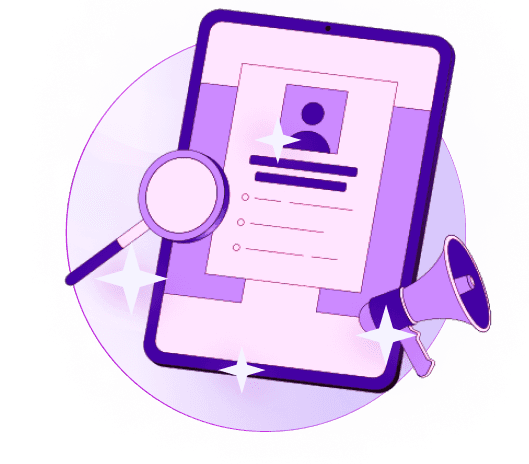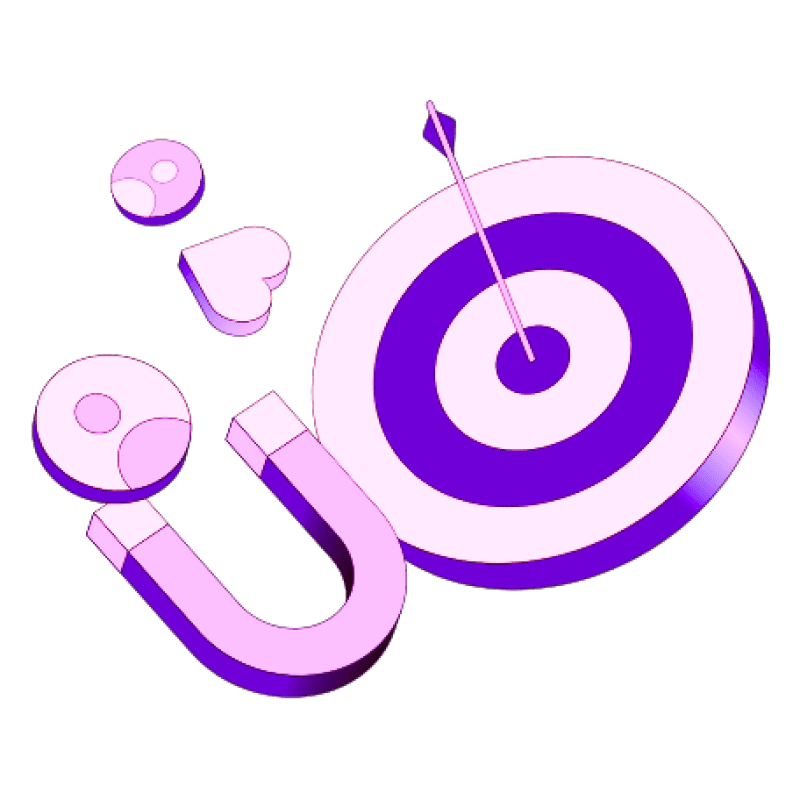Blogs
Articles

How to Build a Cascading Data Enrichment System That Actually Works
The numbers are striking. Your revenue could jump by more than 45% when you boost your cascading data enrichment from 55% to 80%. A business with a $500 customer lifetime value could add $1.25 million without touching their product, pricing, or conversion rate.
Let us walk you through building a cascading data enrichment system that delivers results. We'll cover everything from designing your data cascade sequence to connecting email enrichment APIs with your current tools. This knowledge will help you enrich CRM data and gain a strong market edge.
What is a cascading data enrichment system?
A cascading data enrichment system works in layers to improve and verify contact or company information. The system passes data through multiple providers in a specific order until it fills all required fields or tries all vendors. The name "waterfall" comes from how data flows through vendors like water falling down steps, with each provider adding new information along the way.
This system goes beyond traditional data enhancement methods that use just one source. It creates a backup plan - if one provider can't deliver specific information, the system moves to the next provider automatically. This layered approach gives businesses the best chance to get complete, accurate data.
How is it different from single-source enrichment?
Standard enrichment usually depends on one data provider to fill in information. Your team ends up with incomplete fields, bounced emails, or manual searches when that provider doesn't have what you need. A cascading system works better because it:
Lines up multiple providers in a specific order
Moves records to the next vendor only for missing fields
Completes the process once it matches all needed attributes
Delivers better accuracy while keeping costs down
The sequential approach will give you high-quality data that's worth the investment. The pay-for-success model charges you only when vendors successfully enrich a field—you don't pay if they find nothing useful.
What it all means for CRM and lead data?
Bad or missing data creates the biggest problem in sales and marketing. Waterfall enrichment tackles this head-on by finding more matches and filling in gaps. The numbers tell the story - cascading enrichment finds 80% of emails and 50% of phone numbers, while regular providers only manage 30-60%.
The system helps curb data decay as people switch jobs, companies get bought out, or contact details become outdated. Regular enrichment cycles through multiple sources keep your CRM fresh and ready for action.
Each vendor brings unique strengths to the table. Some excel in North America, others in Europe or Asia. Some know large companies inside out, while others understand smaller firms better. This combination of strengths helps you see more of the market and find prospects that single vendors might miss.
Designing the Data Cascade Sequence
Your business needs specific data points to build a good cascade sequence. First, make a checklist of required fields for leads and accounts. You'll need email addresses, phone numbers, job titles, and firmographic data that affect your routing, segmentation, and sales outreach.
Choosing the right data fields to enrich
The right fields form the base of your cascade system. Email might be your main contact method, while job titles are vital for account-based marketing. Put your efforts into fields that drive revenue or customer engagement. Resources are limited, so focus on fields that help with lead scoring, routing, or personalization instead of enriching everything.
Selecting and ranking data providers
Match data providers to your needs after identifying critical fields. Each vendor brings different strengths - some are better at verified emails, others excel at direct phone numbers or company data. The best performance comes from proper vendor ranking:
Accuracy (90%+ threshold recommended)
Coverage (how many fields they can fill)
Budget-friendly options (pay only for valuable data)
Regional specialization (e.g., Cognism for EU, ZoomInfo for US)
You should sample 100 verified leads per key country to set standards for each provider's performance. This testing helps create informed rankings rather than trusting vendor claims.
Setting up fallback logic for missing data
Your cascade should work like a waterfall. The main data provider looks for missing information first. The process ends if successful. If not, the system moves to the next provider. Data quality checks happen through SMTP, regex validation, or HLR verification. So you get better match rates and reliability.
Avoiding redundancy in cascading columns
Data redundancy leads to problems, inefficiencies, and higher costs. Track which vendors give which data points and adjust your sequence. Move vendors down or remove them if they rarely help. Give priority to consistent performers. This careful approach stops column redundancy where similar information exists in multiple places.
Benefits and Challenges of a Waterfall System
A cascading data enrichment system brings clear benefits but comes with unique challenges that need proper handling. Let's get into both aspects of this powerful approach.
Improved data accuracy and match rates
Waterfall enrichment makes match rates soar compared to traditional methods. Standard single-provider enrichment usually achieves only 50-60% match rates, but cascading systems can push these numbers to 80% or higher. Some systems report match rates up to 93%, and specific provider combinations achieve 94% completion rates without manual work. This directly affects revenue - companies using enriched CRM data generate 44% more Sales Qualified Leads than others.
Cost-efficiency through pay-per-success
The waterfall model works on a simple money-saving principle - you only pay vendors when they successfully enrich a specific data field. Here's how it works:
The system asks the first provider for missing information
Payment happens only after successful data delivery
The system moves to the next provider if unsuccessful
This cycle continues until the field gets enriched or all providers are tried
This method stops you from wasting money on failed enrichment attempts.
Compliance and privacy concerns
Despite its power, cascading enrichment creates complex compliance issues. B2B data flowing through multiple third-party sources means organizations must check if each provider follows GDPR and CCPA regulations. While you're reaching out to businesses, you're still connecting with people who have data rights that need protection.
Managing vendor inconsistencies
Data providers often have different quality standards. This creates gaps when mixing information from various sources with different data formats, accuracy levels, and update schedules. Companies usually fix this by adding data cleansing or normalization tools. These extra steps make the process more complex and expensive.
Optimizing and Maintaining Your System
A properly managed data enrichment system needs proper integration and regular monitoring to deliver consistent results.
Integrating with your CRM or data tools
CRM integration serves as the foundation of effective enrichment. Your team should set up API connections that automatically sync enriched data to your CRM without manual copy-pasting. Popular platforms like LeadCRM provide one-click integration with Salesforce, HubSpot, and Pipedrive. This uninterrupted flow will give sales teams immediate access to verified emails and phone numbers as they enter your system.
Using email enrichment APIs effectively
Adding validation providers as an extra verification layer helps optimize email verification. Some systems allow you to choose whether enrichment ends when "a verified email is found" or when "any email is found". The first option might cost more credits but delivers higher quality data.
Monitoring vendor performance over time
Your team should track each provider's contribution metrics and adjust your sequence based on results. A supplier scorecard helps assess vendors objectively. Providers that rarely deliver useful data should move down your cascade or face removal.
Scheduling regular enrichment cycles
Data decays naturally with time despite the best setup. Your team needs to schedule quarterly or biannual updates to keep data fresh. Implementing continuous enrichment automatically monitors and updates records when information changes. This approach gives your sales and marketing teams practical data that stays current.
Visit Persana.ai to learn more about specialized waterfall enrichment solutions.
Conclusion
Waterfall enrichment systems help businesses enhance their data quality and effectiveness. This piece explores how waterfall enrichment performs better than traditional single-source methods. Match rates jump from 50-60% to an impressive 80% or higher.
Results prove the value clearly. A leap from 55% to 80% enrichment can increase revenue by 45% or more. These substantial financial gains come without changing your core business model. The pay-for-success approach means you invest only in data that creates value.
Creating an effective cascade needs you to identify your business's most crucial fields. You must choose providers with complementary strengths and implement smart fallback logic. While compliance and vendor inconsistencies pose challenges, the benefits far outweigh these hurdles.
Note that even the best enrichment system requires proper upkeep. Your data stays fresh despite natural decay when you monitor performance regularly, integrate with CRM smoothly, and schedule enrichment cycles.

Create Your Free Persana Account Today
Join 5000+ GTM leaders who are using Persana for their outbound needs.
How Persana increases your sales results
One of the most effective ways to ensure sales cycle consistency is by using AI-driven automation. A solution like Persana, and its AI SDR - Nia, helps you streamline significant parts of your sales process, including prospecting, outreach personalization, and follow-up.



